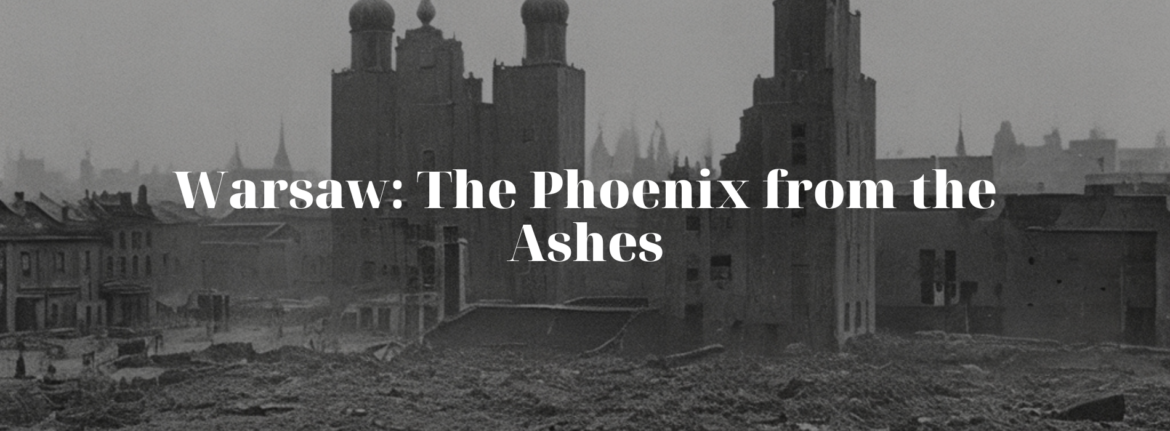Introduction
Warsaw, the capital of Poland, underwent unimaginable destruction during World War II. However, its post-war reconstruction is akin to the mythical phoenix rising from the ashes – a symbol of determination, courage, and the indomitable spirit of the Polish nation.
The Destruction of Warsaw
During World War II, Warsaw was one of the most devastated cities in Europe. The Warsaw Uprising in 1944 and the systematic German policy of repression led to the destruction of over 85% of the city’s buildings. Historic districts, like the Old Town, were almost entirely leveled.
The Reconstruction – A Monumental Project
After the war, Warsaw faced the immense challenge of rebuilding. What began as a practical need to provide shelter for thousands of homeless rapidly transformed into an ambitious project to rebuild national pride and heritage.
The Old Town – Heart of Warsaw
One of the most spectacular aspects of the reconstruction was the rebuilding of the Old Town. Using pre-war imagines and engravings, its medieval layout and Baroque architecture were faithfully restored. In 1980, Warsaw’s Old Town was listed as a UNESCO World Heritage Site as an example of exceptional reconstruction of a historical center.
Marszałkowska Residential District
Another significant project was the construction of the Marszałkowska Residential District (MDM), representing the Socialist Realist architectural style. MDM became a symbol of modern Warsaw, merging historical heritage with a vision for the future.
Legacy and Lessons
The reconstruction of Warsaw after World War II is not just a testament to physical transformation but also reflects the resilient spirit of the Polish nation. Warsaw, like the phoenix from mythology, rose from the ruins to once again become the beating heart of Poland – a symbol of hope, rebirth, and the continuous struggle for a better future.
In rebuilding the city, not only architectural plans and urban designs played a crucial role, but also the determination and solidarity of its residents. Today, Warsaw stands as a unique example of how a devastated city can be reborn, becoming a living monument to its own history.
Conclusion
The reconstruction of Warsaw post-war demonstrates that even the greatest destruction and tragedy can be a starting point for creating something new and beautiful. It serves as a reminder that history, though often painful, can be the foundation for building a future based on respect for the past and hope for a better tomorrow.
